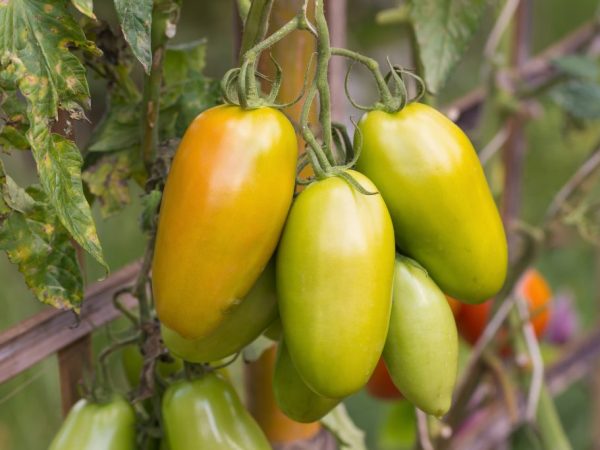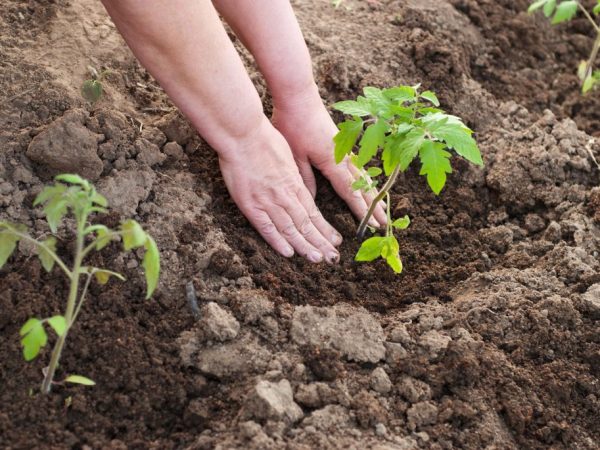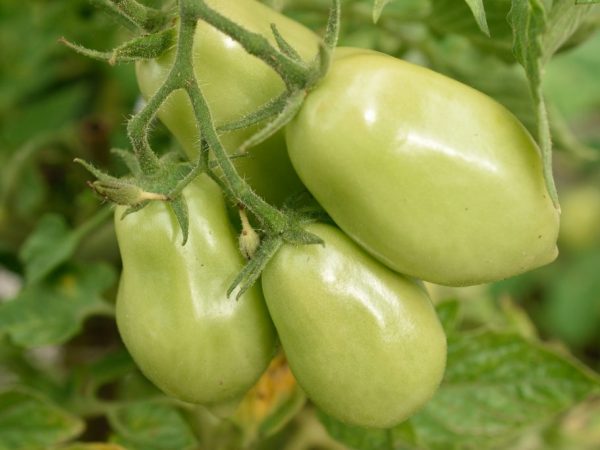Characteristics of a tomato variety Zolotaya Rybka
Among the huge variety of varieties, the Golden Fish tomato stands out favorably. It has long been loved by many summer residents for its high yield, as well as beautiful and tasty fruits.

Characteristics of a tomato variety Zolotaya Rybka
But not only this made the variety so popular. Thanks to breeding work, the plant is resistant to most diseases, and also takes root well even in the most unfavorable conditions.
Characteristic
The official characteristics and description of this nightshade says that the Golden Rybka tomato is suitable for growing, both in the South and in central Russia. It is resistant to nighttime drops in temperature, and high yields can only be envied.
Description of the variety
Tomato variety Zolotaya Rybka is a medium-late variety, since the period from the appearance of the first shoots to the beginning of fruit ripening lasts about 109-115 days. The plant does not belong to hybrids, so you can independently collect seeds from fruits grown in your garden. This significantly reduces the cost of planting material.
The variety has a high yield. For the entire growing season, up to 10 kg of ripe high-quality fruits can be harvested from 1m².
Description of the bush
Tomato Goldfish belongs to the indeterminate type of plants.
The bush grows more than 2 m in height, therefore it needs formation and timely garter. The plant is formed in 2 shoots, so the maximum productivity of the culture is achieved.
The ovary is formed in the form of simple inflorescences, after 8-10 leaves. Subsequent fruits are laid after every third leaf. Stems and leaves are not large, have a light green color, not significantly pubescent.
Description of fruits
The description says that the fruits of this variety are versatile.
They are great for preparing fresh salads due to their meaty structure and dense skin. Also, the small form of tomatoes allows them to be preserved whole. It is not recommended to use fruits for making juices, sauces and pastes, as the appearance of the dish will not be appetizing due to the specific color.
Goldfish tomatoes have an unusual shape and color, for which they are popular among gardeners. It is difficult to confuse them with other varieties:
- the fruit is strongly elongated, has a slight sharpening at the end;
- the skin and pulp are yellow-orange;
- no more than 4 seed chambers, with a small amount of small seeds.
The taste of tomatoes is also worth noting. Reviews of the Golden Fish tomato boil down to the fact that the pulp of their fruit has a sweet, pronounced tomato taste with a slight sour aftertaste. The skin, although dense, does not spoil the taste of the fruit in fresh salads.
Growing seedlings

Seedlings can be bought or grown by yourself
In order to get a well-developed and healthy adult plant, you need to take good care of the seedlings.You can buy seedlings in nurseries or from trusted gardeners, but you can only be completely confident in the planting material by taking on this business yourself.
Planting seeds
Since the plant is a representative of mid-late varieties, the seeds are planted at the end of February. Particular attention should be paid to the choice of planting material. It is worth giving preference to trusted manufacturers, or independently collect seeds from the largest and healthiest fruits.
The seeds are planted in a mixture of peat, humus and earth. Such a substrate will make it possible for young shoots to grow and develop, which are in dire need of nutrients. The soil is well moistened before planting, and the seeds themselves are soaked for 2-3 hours in a weak solution of potassium permanganate.
Sprout care
After the first shoots appear, the seedling box must be placed in a warm, well-lit place. It is important to remember to maintain a comfortable air humidity. If the humidity is low, and this may be near heating devices, it is necessary to water the seedlings more often. Lack of light and short daylight hours can be compensated for with special ultraviolet lamps.
When growing tomato seedlings, you need to remember that:
- Young shoots are very tender and can be easily injured and even burned by direct sunlight.
- Tomatoes grow quickly and reach for light. In order for the plant to form correctly, you need to turn the pot to the light source in different directions.
- The soil taken from the garden can be infected with spores of fungi or eggs of parasites, therefore, before using it, it is calcined or watered with a solution of manganese.
When 3-4 true leaves appear on the shoot, it is dived and planted in separate pots or cups. There he will grow until transplanted to a permanent place.
Transplanting
When the seedlings reach 50-60 days of age and the threat of recurrent frosts disappears, the tomatoes are planted in a permanent place. This can be an open bed or a film shelter. The variety is hardy and bears excellent fruit for any planting option.
Since the tomato is very tall, it is worth considering this when growing it in greenhouse conditions. Bushes are planted at a distance of 40-50 cm from each other. No more than 5 plants should be placed on 1m².
In the spring, humus, potash and phosphorus fertilizers are added to the ground where tomatoes will grow. This can also be done just before planting by placing the fertilizer directly into the hole. But it is worth being careful with humus, it must perephee well, otherwise the roots of the tomato will simply "burn".
Fertilizer

The plant needs feeding
It is necessary to fertilize the culture not only during planting, but also during the entire growing season. 2 weeks after planting the seedlings, you can carry out its first feeding. By this time, the plant is rooting well and can get the necessary substances from the soil.
Subsequent fertilization occurs at the beginning of flowering of plants and the period of ripening of fruits. The bush is watered at the root with water diluted in it with potash, phosphorus and sodium fertilizers.
Among other things, many summer residents practice feeding with nettle infusion and other weeds. To do this, the green mass is soaked in a barrel or flask and left to ferment for 10-14 days. The resulting slurry is diluted in water and watered at the root of the plant.
Watering
Tomatoes are watered early in the morning or in the evening. During this time, there is no sweltering heat, and the liquid does not evaporate from the soil surface too quickly. Due to the fact that tomatoes can crack from excess moisture, you should not flood the plants too much. Such watering can also provoke the development of late blight.
The water must be warmed up before watering. Cannot be poured directly from the well. Such a sharp temperature drop harms the roots and contributes to the development of root rot.
Diseases
Although the Zolotaya Rybka variety is not very susceptible to diseases of the nightshade family, there is still a risk of developing late blight. This often happens due to mistakes in the care of the culture. Seeds or soil may also be initially contaminated.
Prevention
In order to avoid the development of late blight, you need to adhere to the basic rules of disease prevention. This will not only prevent, but also help cope with the spread of the pathogen.
For the prevention of late blight, you must:
- control watering;
- timely remove affected shoots and fruits;
- choose seeds from only high-quality producers;
- observe crop rotation.
It is also necessary to remove the shoots after the end of the growing season. Leaving bushes in the beds for the winter often cause the development of fungal diseases.
Conclusion
Golden Fish tomatoes delight the eye not only with their attractive shape and color, but also with their abundance. Bright yellow clusters of elongated fruits look very decorative on the bush. Also, the rich taste of tomatoes cannot but rejoice.
Gardeners have been growing the Goldfish for many years, and each time the variety receives only positive reviews. And for those who have never tried these wonderful tomatoes, it is recommended to allocate a bed for this wonderful tomato.


